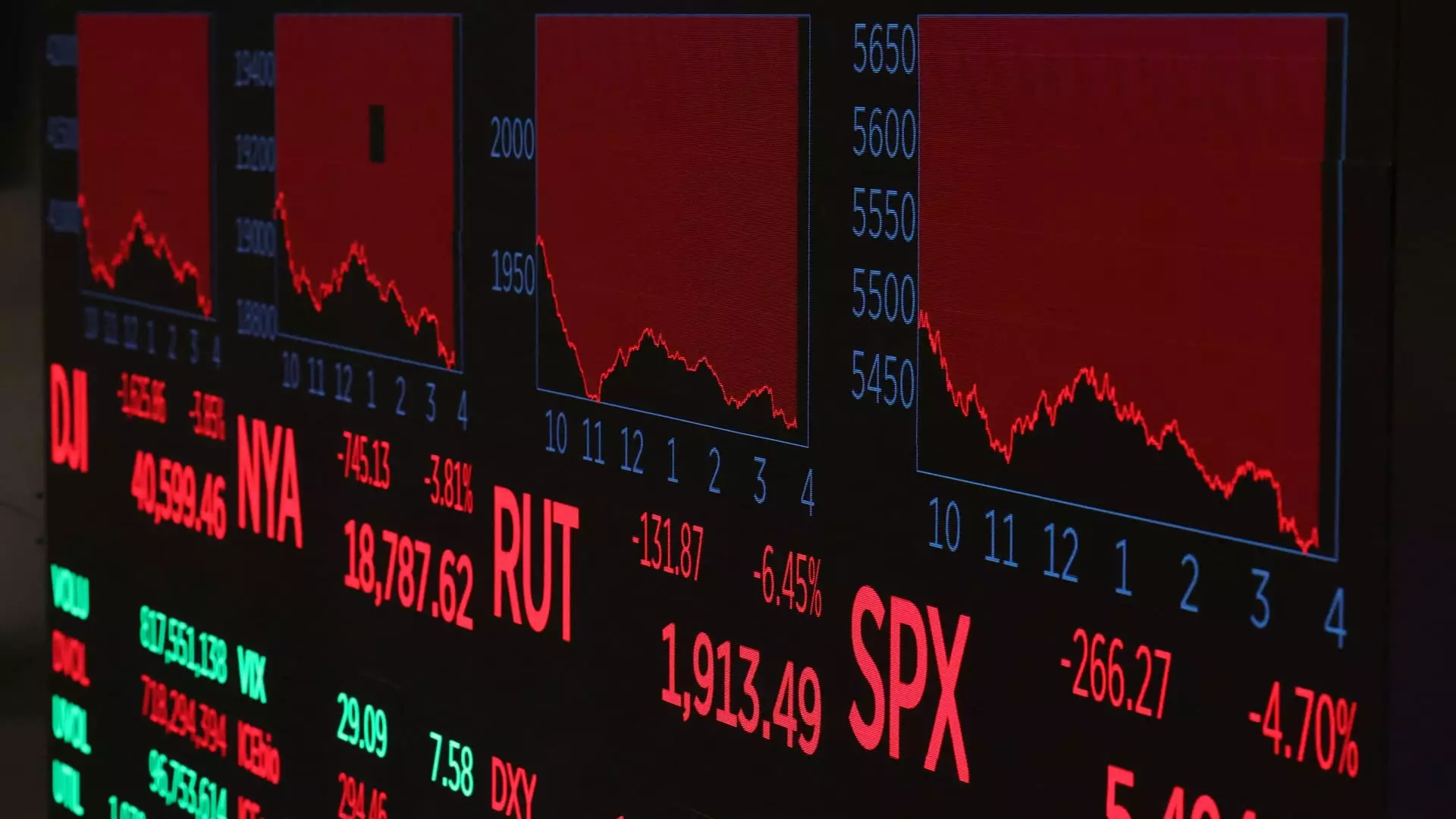In an economic climate filled with uncertainty, characterized by fluctuating markets and the looming specter of recession, new strategies are emerging that defy conventional investing wisdom. A striking case in point comes from the retail investors who have recently stormed the stock market. Armed with information and unshakeable resolve, these everyday traders are flipping the script on what it means to invest in a turbulent economy. Instead of retaining a cautious distance, many are actively capitalizing on perceived discounts in the market—most notably seen in the sheer volume of transactions that occur after significant market drops. This phenomenon has presented itself as a chance for bold investments, much like Rachel Hazit, a Philadelphia marketer, who seizes the moment during downturns, viewing them as “sales” on stocks.
This mindset of seizing opportunities, rather than succumbing to fear, reveals a behavioral shift. Retail investors who once sat on the sidelines are finding solace and action amid chaos. They are lubricating the market with billions in cash flow at times when institutional investors exhibit caution or even retreat. This tenacity showcases not only their confidence in the stock market but also a departure from the knee-jerk reactions that often plague less informed or more risk-averse investors.
Going Against the Grain
When news broke about President Trump’s implementation and subsequent rollback of aggressive tariffs, the market initially jolted, sending shockwaves through Wall Street. Economists hurriedly adjusted their predictions to reflect an increased likelihood of recession, while stock analysts reassured their clients with a revised, gloomier outlook. However, the retail investor, unbound by the institutional conventions of fear and hesitation, continued to pour money into the market. In fact, data from Vanda Research highlighted an astounding $8.8 billion inflow in just a few days, a historical high for retail investment amidst such volatility. It begs the question: Are retail investors tapping into a well of resilience that institutional players have overlooked?
The retail market’s staunch resolve against the backdrop of an impending economic downturn illuminates a key truth: the willingness to “buy the dip” is not merely about speculation, but an active belief in the adaptability and strength of the market. Even with recession fears at an all-time high and volatility indices peaking, many individual investors are opting to invest in diversified index funds, signaling a preference for long-term horizons over short-term panic.
The Psychology of “Buying the Dip”
Amidst widespread economic pessimism, the surge in retail trading reflects a renewed sentiment among individuals who believe in the untapped potential of market rebounds. The phrase “buying the dip” has taken on a dogged persistence among this new class of investors grounded in a unique psychological resilience. The logic is straightforward: if the market has proven to rebound from downturns in the past, why would this time be any different? Retail investors like Rachel Hazit embody this sentiment, declaring their investment strategy even as they express nervousness about the broader economic implications of federal policies.
However, it is crucial to recognize that this mentality comes with inherent risks. The increasing participation of retail investors in buying amid turbulence fosters a mix of optimism and danger. The CBOE Volatility Index, the market’s barometer of fear, indicates that while these courageous moves may reap rewards, they could also lead to substantial losses if the market trend reverses unexpectedly. In this context, the retail investor is essentially walking a tightrope: LGBTQX0016bathed in opportunity but surrounded by volatility.
Influencers and Market Dynamics
The role of influencers in today’s retail investing has become more pronounced than ever. They carry significant weight in shaping perceptions and strategies among individual investors. Tori Dunlap and others have championed the narrative that investing during downturns is formidable and historically profitable. Their platforms aim to educate, thereby motivating new cohorts of investors—particularly those from historically disenfranchised backgrounds. Yet, while influencers push narratives of down-market investing, they must also temper expectations, acknowledging the intricate labyrinth of market dynamics.
The influx of retail investments into market-focused exchange-traded funds (ETFs) indicates a systemic shift toward broader index-based investing rather than high-stakes stock picking. This strategy demonstrates a collective movement away from impulsive buying decisions towards a more stabilized, cautious approach that seeks to ride the waves of market fluctuations.
Facing the Future with Care
Even as they navigate this brave new world, retail investors like Hazit and Namaan Mian remain acutely aware of the broader economic challenges that lie beyond market graphs and returns. Tariffs, inflation, and consumer confidence shape their anxiety as they invest. While the act of buying during downturns may signify an optimistic outlook, many remain cautious about their long-term financial security, illustrating the delicate balance between greed and prudence in financial planning.
This mixed landscape of trepidation and resilience reveals a paradox: While retail investors are eager to capitalize on perceived bargains in a volatile market, the specter of economic instability looms large. Collectively, they embody a unique spirit of defiance, displaying both a desire to enhance wealth and a cautious respect for the inherent uncertainties of investing. The true challenge remains: can they outmaneuver the conventional wisdom and steer with confidence through even the roughest waters?

